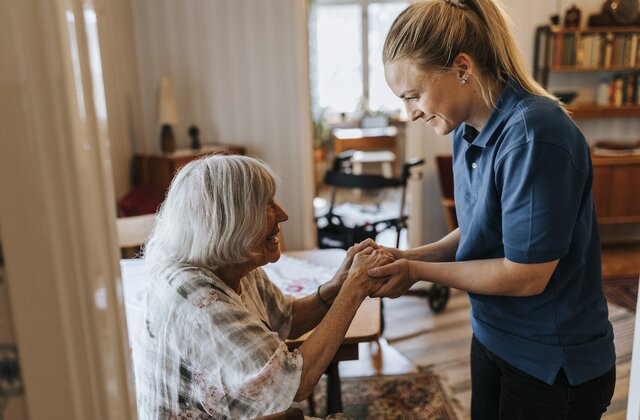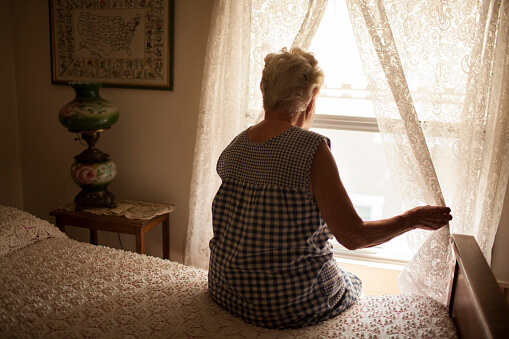Caring for a loved one with Alzheimers can be challenging, particularly when it comes to ensuring their safety. One of the most significant concerns is the risk of falls. Fortunately, advancements in technology have led to innovative solutions for fall detection, offering caregivers peace of mind and enhancing the quality of care. In this article, we will explore the importance of fall detection in Alzheimer’s caregiving and how current technologies can make a difference.

The Importance of Fall Detection in Alzheimers Care
Alzheimer’s disease affects millions of people worldwide, and as the disease progresses, the risk of falls increases. Falls can lead to severe injuries, and in the case of Alzheimer’s patients, they can also exacerbate symptoms and lead to rapid health decline. Implementing effective fall detection systems is crucial to prevent such incidents and ensure timely intervention.
How Does Fall Detection Technology Work?
Fall detection technology uses various sensors and algorithms to detect when a person has fallen. These systems can be worn as a device or integrated into the living environment. When a fall is detected, alerts are sent to caregivers or emergency services, allowing for rapid response. This can be a lifesaver, especially when dealing with patients who might not be able to communicate their needs effectively.
Wearable Devices
Wearable devices, such as smartwatches and pendants, are popular choices for fall detection. These devices use accelerometers and gyroscopes to monitor movement and detect falls. They are user-friendly and can be worn comfortably, ensuring continuous monitoring. Moreover, they can often be linked to a smartphone app, allowing caregivers to receive instant notifications.
Home-Based Systems
Home-based fall detection systems include motion sensors and cameras strategically placed around the house. These systems provide comprehensive coverage and can detect falls in specific areas like bathrooms and staircases, where falls are more likely to occur. For more information on privacy-friendly fall detection solutions, you can visit fall detection solutions.
Integrating IoT in Fall Detection
The Internet of Things (IoT) plays a crucial role in modern fall detection systems. IoT enables devices to communicate with each other, providing a seamless caregiving experience. Smart homes equipped with IoT devices can monitor and report falls effectively, offering added security to Alzheimers patients. Learn more about IoT’s impact on daily life at IoT sensors.
Advantages of IoT in Alzheimers Care
- Real-time Monitoring: IoT devices provide continuous monitoring, allowing for real-time updates on the patient’s status.
- Automatic Alerts: In the event of a fall, IoT systems can automatically send alerts to caregivers and emergency contacts.
- Data Collection: IoT devices collect valuable data that can help doctors and caregivers understand the patient’s patterns and adjust care plans accordingly.
Challenges and Considerations
While fall detection technology offers numerous benefits, there are challenges to consider. Ensuring the privacy of the patient is paramount, and caregivers must choose systems that respect personal boundaries. Additionally, the cost of implementing these technologies can be a barrier for some families. Its essential to weigh the benefits against the costs and choose solutions that are both effective and affordable.
The Future of Fall Detection Technology
The future of fall detection technology looks promising, with continuous advancements improving accuracy and reliability. Upcoming technologies include AI-driven systems that can predict falls before they happen, providing even greater protection. These innovations will undoubtedly transform caregiving for Alzheimers patients, making it safer and more efficient.
Conclusion
Caring for someone with Alzheimer’s requires constant vigilance and adaptation to new challenges. Fall detection technology is a vital tool in ensuring the safety and well-being of those affected by the disease. By embracing these technologies, caregivers can provide better care and improve the quality of life for their loved ones. For more insights on enhancing elderly care with technology, visit smart elderly care solutions.

FAQs
What is the best fall detection device for Alzheimers patients?
The best device depends on individual needs. Wearable devices are popular for their ease of use, while home-based systems offer comprehensive coverage.
How reliable are fall detection systems?
Most modern systems are highly reliable, with advanced sensors and algorithms ensuring accurate detection. However, it’s essential to choose reputable brands and regularly maintain the devices.
Are there privacy concerns with fall detection technology?
Privacy is a valid concern, especially with camera-based systems. Opt for privacy-friendly solutions that use non-intrusive sensors to ensure the patient’s comfort and dignity.
This article contains affiliate links. We may earn a commission at no extra cost to you.






